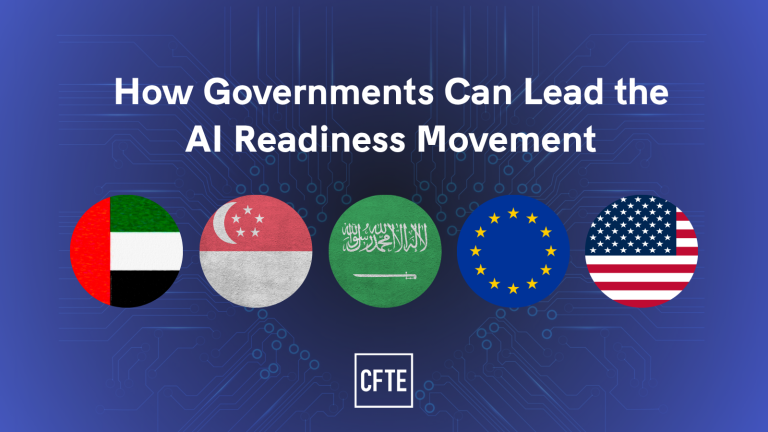Around the world, AI is no longer just a technology policy — it’s an economic, educational, and national competitiveness issue.
Governments are building digital strategies, launching public-private labs, and funding AI startups.
But one question remains unanswered in too many regions:
Who is preparing the people?
In The AI-fication of Talents, CFTE outlines why workforce readiness must become the next strategic pillar of AI policy — and how governments can lead this shift.
Digital Literacy ≠ AI Readiness
Teaching citizens to use digital tools was a major milestone of the 2010s.
But intelligent systems demand a different kind of fluency.
Not just how to use technology — but how to operate, adapt, and thrive in systems where AI is integrated into decisions, processes, and institutions.
AI readiness must be:
- Strategic, not just technical
- Systemic, not siloed
- Measurable, not anecdotal
The Challenge: Scale and Structure
Governments face three interconnected challenges:
- Scope — AI affects all sectors, not just STEM or tech
- Speed — Capabilities evolve faster than policy cycles
- Signal — Without a clear readiness standard, investment and training efforts remain fragmented
Without structure, even well-funded initiatives risk falling short.
The Response: AI Capability Engine (ACE)
To address this, CFTE introduces the AI Capability Engine — a framework designed for governments and institutions to:
- Define AI readiness at different levels (public servants, leaders, professionals)
- Deploy aligned training across ministries, agencies, and partners
- Measure progress using consistent, adaptable benchmarks
- Integrate with policy goals (e.g. EU AI Act, UAE Vision 2031, Singapore’s Smart Nation)
ACE makes AI readiness actionable — not just aspirational.
Global Examples in Motion
Several countries are already acting:
- UAE launched AI education in schools and upskilling in federal agencies
- Singapore embedded AI skills into its lifelong learning strategy and national curriculum
- Saudi Arabia committed to training 1 million citizens in AI
- Europe aligned workforce goals with regulatory frameworks via the EU AI Act
- USA is integrating AI fluency into its K–12 and post-secondary education systems
What these regions share is not just funding — but intent.
They’re treating talent as infrastructure.
Policy Recommendations for Governments
From our research, governments seeking to lead in AI readiness should:
- Shift from digital literacy to AI system fluency
- Build talent density, not just workforce scale
- Treat readiness as a national asset — like energy, security, or infrastructure
- Use frameworks (like ACE) to turn strategy into measurable action
The global AI race won’t be won by code alone — but by capability.
Download the Whitepaper
The AI-fication of Talents offers a roadmap for national leaders, policymakers, and public institutions to move from discussion to deployment.
Let’s make AI readiness a policy priority — and a national advantage.

